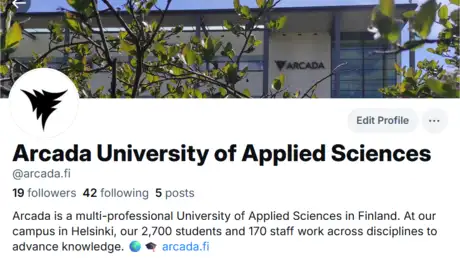Humanisation of Media on Social Media
Published: 08.12.2022 / Blog / Publication / Research
Elisa Arce Simmelink
Communication has always been a critical factor that drives the connection between human beings. Throughout the years, modern life has allowed new technical means of communication to emerge. Mass media, with its one-way communication model, had no interaction, but with the rise of web 2.0, it re-humanised communication, and digital communications became crucial in all sectors worldwide.
My experience as a content creator in social media since 2016 has shown me that humanisation must be incorporated into the communication process to create affinity with the receiver. Without it, there is no connection, resulting in a lack of trust and credibility. During my online career, I had to learn how to deal with the audience and understand what created relationships. This allowed me to analyse the importance of kinship to build a community and to test different resources to reach my goal.
My thesis research intended to explain the evolution of media, define the humanisation of media, and help media companies strategically face present and future digital challenges. However, when investigating scholarships, several pieces of research show the importance of humanisation in brands. They lead from anthropomorphism to online communication strategies (e.g. MacInnis and Folkes, 2016; Andriuzzi, 2015). But the same does not happen in the media industry, and the scarcity of literature gave me the will to discuss it more widely. Therefore, a literature review and a questionnaire were applied together with a netnography to analyse the field.
The study included deep research into the emergence of social media, the humanisation of brands and communication, influencer marketing and other co-related marketing, brand and media aspects. Along with the research, different backgrounds appeared through scholarly and popular debate to conceptualise the phenomenon (e.g. Picard, 2015; Lin, 2020). This analysis showed the media evolution and how it shifted from a one-way communication model to a two-way communication approach, removing the hierarchical structure used in mass media and giving voice to people. These approaches concluded that the public’s trust in media, or its lack, may have caused the process (Harper, 2010), together with the advance of new technologies, which introduced new communication methods (Jucker, 2003).
My thesis proposed to answer four questions: What is the humanisation of media? Why has the humanisation of media happened? How has humanisation changed the media? Who came first, influencers or humanisation?
Although humanisation has existed to some extent since mass media, how it is applied has evolved over the years with social media. The research findings have shown that Web 2.0 has changed communication. And this resulted in the new digital era creating a necessity for adaptation not only for the media sector but for all those who use communication skills, including brands, self-brands and other types of organisations.
According to my investigation, the humanisation of media results from the social media revolution and the need to adapt to the new digital communication approach. It is defined as a communication model that makes any “communication to the masses feel more personal and human, less corporate and cold” (Participant 9) and which “seeks not only to communicate for the sake of communication but to impact and transform” (Participant 12).
This new framework created the need for brand and media communications to work together to build relationships with their audience and consumers. The consequence was to humanise how messages were sent and received to diminish failure in the transmission. This caused them to join forces to leverage their interests, which led to an understanding that the branding and media seemed to blur. It also gave space to influencers who play an essential role as mediators of communication.
The study suggests that if Web 2.0 changed communication, humanisation changed how media communicates. Consequently, the humanisation of media revolutionised the industry’s performance by creating a new communication model that aims to reach its goals with a more personal and human touch. However, dealing with humans is not straightforward, and the model can attract positive or negative consequences, which may result in increased revenue or hate and cancel culture.
The research findings also raised a conflict of opinion when analysing brand and media: do the stakeholders understand that media and branding are two different elements? The study provided examples illustrating that they probably do not think about the humanisation of media as a tool but as something natural and automatic in their daily routine. And that might be related to the concept that people believe in people, so it is not hard to think how humanisation could not be normalised by having people interacting directly.
The primary outcome of this research was that how media performs has changed. The questioning might appear about how humanisation has existed since mass media, but how it is applied today differs from the past. And there is no way back to a unidirectional model. People’s voices echo daily in digital communications, and stakeholders and any ordinary person must constantly adapt and learn how to deal with the new reality.


